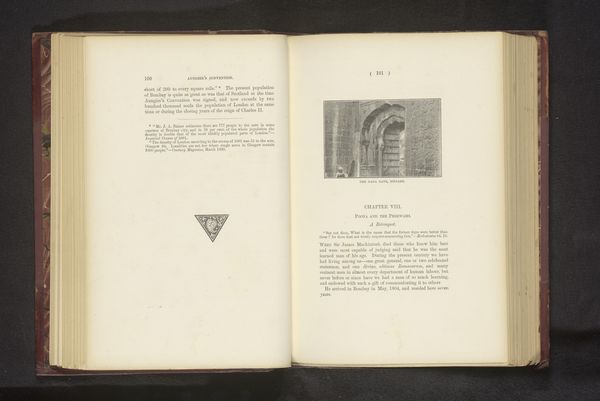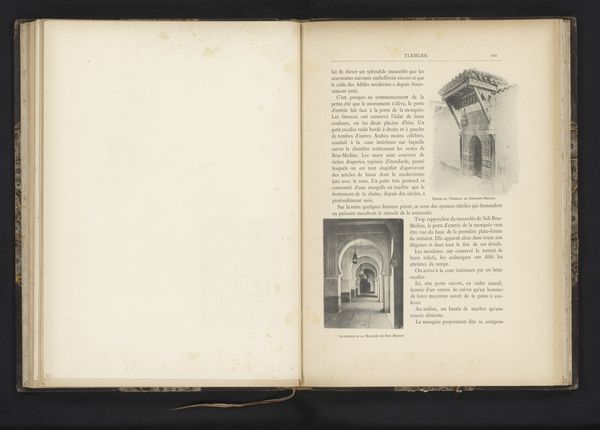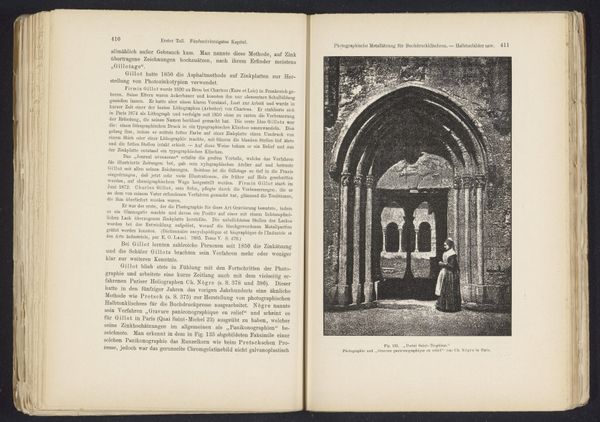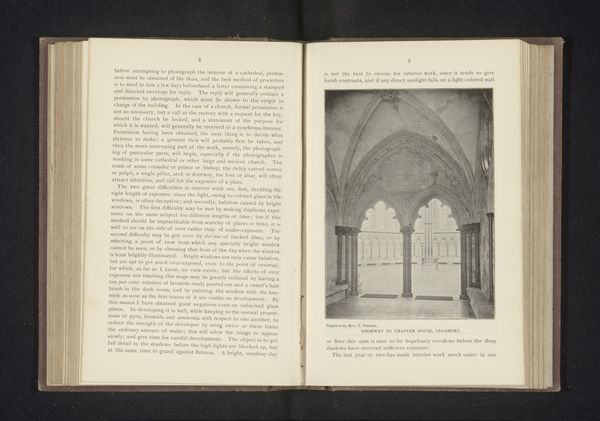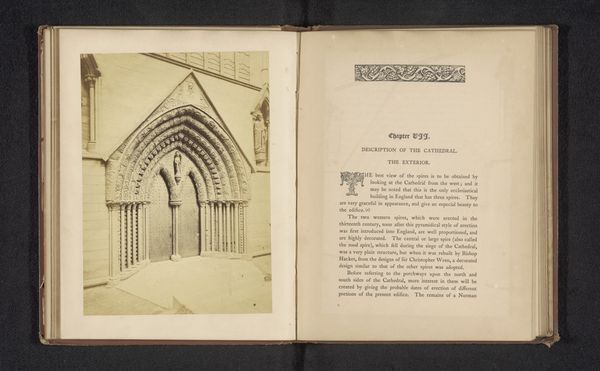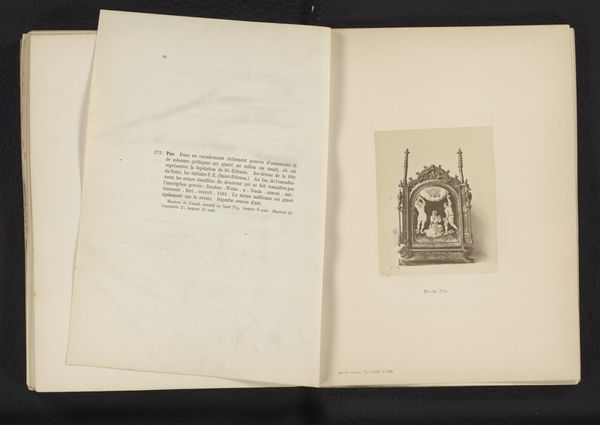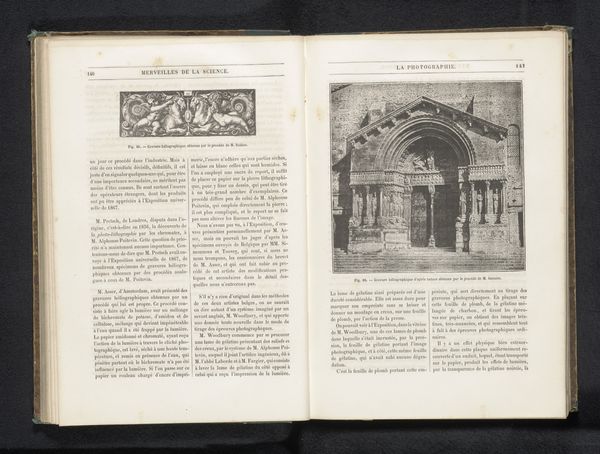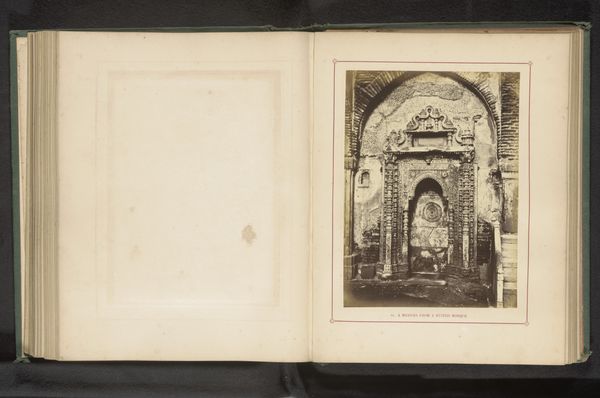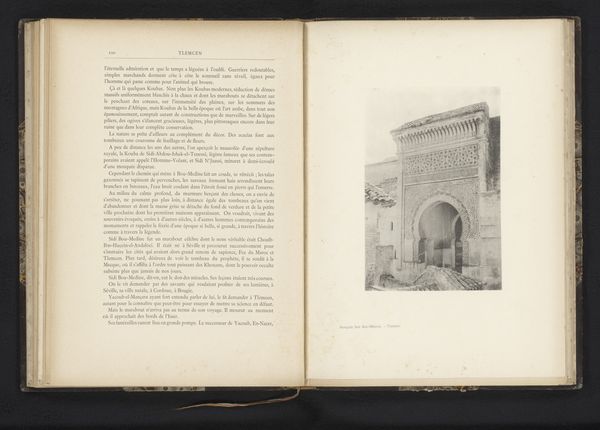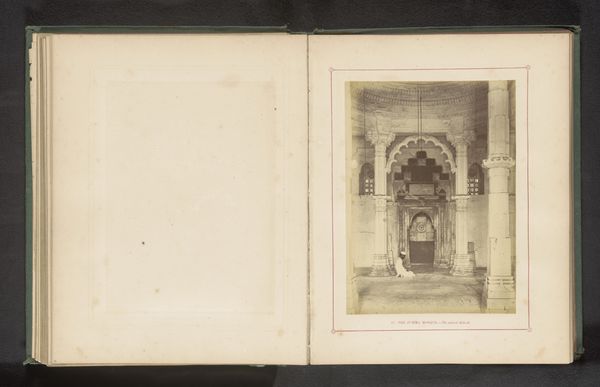
print, engraving
# print
#
book
#
landscape
#
islamic-art
#
genre-painting
#
engraving
Dimensions: height 94 mm, width 70 mm
Copyright: Rijks Museum: Open Domain
Curator: Let's discuss this intriguing print entitled "Dehli gate, Raygarh" made before 1893. It resides in the collection of the Rijksmuseum and appears to be an engraving featured in a book. What are your initial thoughts? Editor: My first impression is one of starkness and a profound sense of enclosure, despite it being an entryway. The deep recession and shadowed stairs evoke a feeling of being hemmed in, a sort of imposed barrier. Curator: I agree, the architectural lines and chiaroscuro create a palpable sense of depth. Note how the composition draws your eye directly toward the arched opening. It uses strong contrasts between light and dark to emphasize its geometry. The lines are exceptionally clean for an engraving. Editor: I am drawn to thinking about what that "gate" truly represents. Raygarh's Dehli Gate isn't just about physical space, but of dominion and restriction within the context of pre-colonial India, considering both British rule and the declining Mughal power. How might the artist subtly comment on shifting social boundaries or question ideas of entry and exclusion during the 19th century? Curator: Perhaps, but also look at the subtle rendering of depth through varied hatching techniques. The print shows considerable expertise. I suggest we can appreciate its structural complexity regardless of wider political subtexts. Editor: But shouldn't we explore why an anonymous artist chose this particular architectural form as their subject, potentially engaging with issues like national identity, historical memory, and post-colonial power? Art doesn't exist in a vacuum; this doorway surely carried charged symbolic weight, ripe for considering how the colonial gaze altered perceptions. Curator: Indeed. On reflection, my earlier point about composition should incorporate this charged context you provided, of cultural tension. Now I find myself rethinking those arches. Editor: Exactly, our visual analysis has a newfound understanding by grounding those elements of art in something bigger, prompting questions about cultural appropriation, imperial narratives, and subaltern perspectives—consider what "Dehli gate, Raygarh" means now in 2024, far from its origins.
Comments
No comments
Be the first to comment and join the conversation on the ultimate creative platform.
